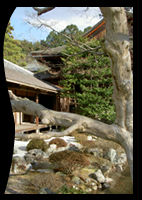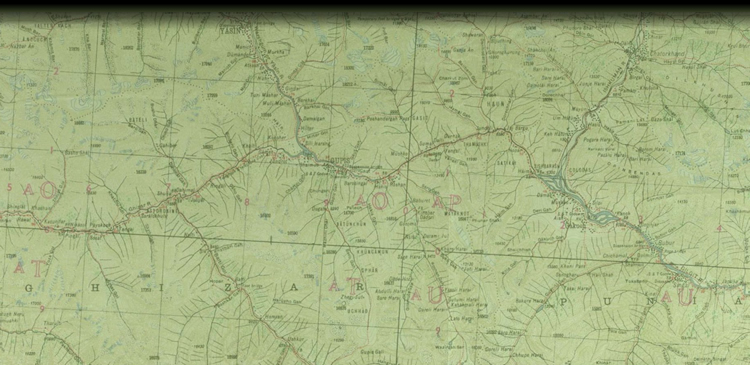|
About the Project
Kinji IMANISHI (1902-1992) was an entomologist, ecologist, anthropologist, founder of Japanese primatology, and an accomplished mountaineer, who had great popularity as an explorer among the Japanese public and was twice honored by the Emperor of Japan. Although his published works are gathered in a 14 volume Collected Works, the existence of approximately 8000 unpublished pages of his personal notes and papers dating from 1919-1980 is largely unknown. In 2001 this large collection was rediscovered by his eldest son, Bunatar is largely unknown. In 2001 this large collection was rediscovered by his eldest son, Bunatar IMANISHI in his family home in Kyoto, Japan. These papers were found neatly bound in separate bundles or in boxes and envelopes in the family home. IMANISHI in his family home in Kyoto, Japan. These papers were found neatly bound in separate bundles or in boxes and envelopes in the family home.
In May, 2001 Pamela Asquith was invited to see the materials and spent five weeks cataloguing the extent of half of the materials. In July, 2002 she returned with Peter Ryan for two weeks to test the feasibility of making a digital archive of the materials. At that time digital images were taken of a variety of the materials in the offices of the Mainichi Newspapers in Kyoto. In 2003 Kiyoaki SAITO brought the entire collection to the University of Alberta to be digitally recorded from May-August, after which Asquith returned the materials to Japan. In 2004 from May-August work continued at the University of Alberta to prepare the images and database for this website.
The materials are in Japanese, German and English, with one undergraduate notebook in French. The recent translations into English1 and German2 of Imanishi’s seminal work, Seibutsu no Sekai (The World of Living Things), originally published in 1941, provide western scholars with some insight into the philosophical underpinnings of Imanishi’s contributions. The addition of this archival resource vastly extends our knowledge of Imanishi’s intellectual journey, including the influence of earlier western research on the development of his views on environment, behavioral ecology and evolution. In addition, Imanishi’s donation of his personal library to Gifu University. Gifu city, Japan on his retirement as President of the university, helps us to round out the sources upon which Imanishi drew when he developed his own unique synthesis of eastern and western materials and applied it to years of fieldwork and theorizing. We welcome scholars from many disciplines to share the riches of this historical source. the philosophical underpinnings of Imanishi’s contributions. The addition of this archival resource vastly extends our knowledge of Imanishi’s intellectual journey, including the influence of earlier western research on the development of his views on environment, behavioral ecology and evolution. In addition, Imanishi’s donation of his personal library to Gifu University. Gifu city, Japan on his retirement as President of the university, helps us to round out the sources upon which Imanishi drew when he developed his own unique synthesis of eastern and western materials and applied it to years of fieldwork and theorizing. We welcome scholars from many disciplines to share the riches of this historical source.
1Asquith, Pamela J., Heita Kawakatsu, Shusuke Yagi and Hiroyuki Takasaki, (transl) 2002. A Japanese View of Nature. The World of Living Things by Kinji Imanishi. London and New York: RoutledgeCurzon.
2Wuthenow, Asa-Bettina and Satoko Kurahara, (transl) 2002. Imanishi Kinji. Die Welt der Lebewesen. München: Iudicium Verlag GmbH.2> Wuthenow, Asa-Bettina and Satoko Kurahara, (transl) 2002. Imanishi Kinji. Die Welt der Lebewesen. München: Iudicium Verlag GmbH
top
|
|



